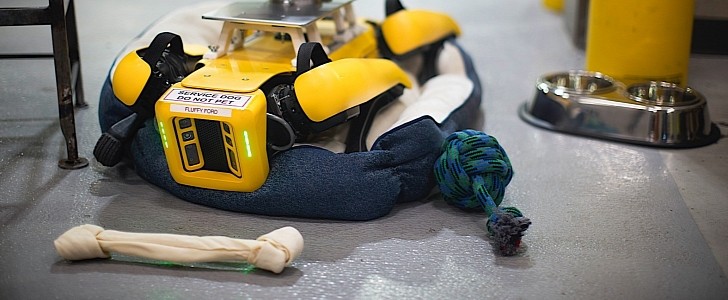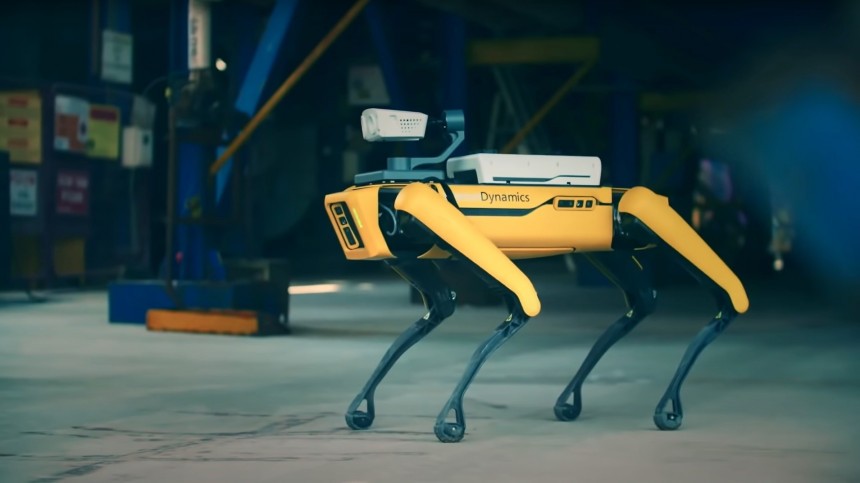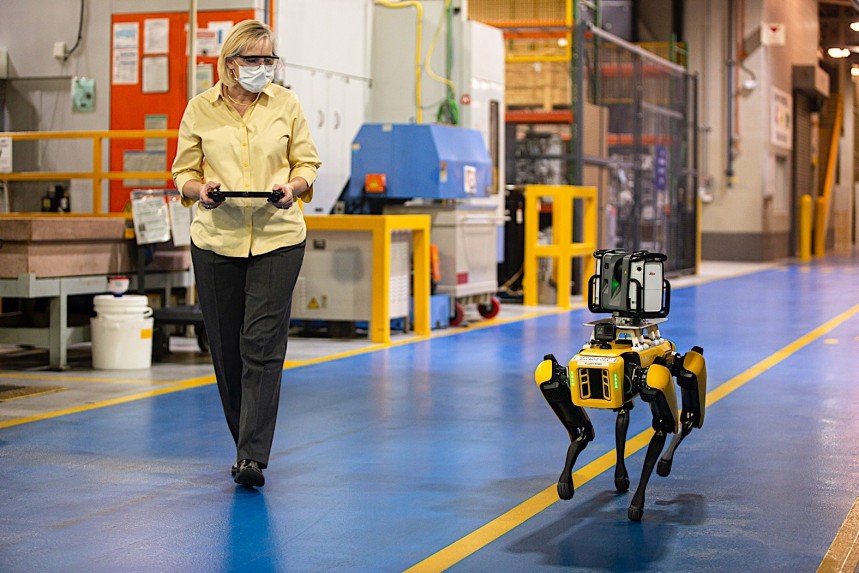It’s been more than a year now since the wicked-looking Spot robot has been on the open market, and we can’t really say our lives changed one way or another because of it. Emphasis on “our lives,” as others are already reaping the benefits of having a headless robot dog around, doing all sorts of things.
Priced at $74,500, which is about as much as a Porsche 718 Boxter S, the thing is seen as Godsent by companies in need of a solution capable of going places and doing stuff living people usually avoid. Its maker, Boston Dynamics, brags with about seven major customers for Spot already, and that list includes names like NASA’s Jet Propulsion Laboratory, and construction company Strabag.
The robot was seen at one point on the floor of the Ford Van Dyke Transmission Plant in Michigan, where the Blue Oval was using it to map the place in light of some retooling it needed done there.
Since it was commercially introduced a year ago, Spot even went inside Chernobyl, where the United Kingdom Atomic Energy Authority deployed it to read some radiation levels. It was used inside a high-voltage substation in Boston for National Grid inspection purposes, and even got deployed for military exercises alongside 80 students from the French École Militaire Interarmes (EMIA).
That’s quite a lot of activity in a very short timeframe, which amounts according to Boston Dynamics to the robot having “logged thousands of miles in industrial facilities and on construction sites around the world.” Enough data to see what can be improved, and give birth to an update of sorts.
And that’s exactly what Boston Dynamics did mid-September: it rolled out something called Spot Release 3.0, an update to the robot dog’s software meant to provide it with “flexible autonomy and repeatable data capture, making it the data collection solution you need for safer and more efficient inspection rounds.” In words we can all understand, they’ve made it better than ever, especially when it comes to the thing's autonomy and data-gathering abilities.
The update allows Spot to do some things better and faster. It can now take the shortest path to its destination with a simple selection of the mission it is meant to perform, it can replan around blocked paths, and can even be programmed to perform its duties after working hours.
The CAM+ pan-tilt-zoom camera Spot is fitted with can now be used to “capture the same image from the same angle every time,” for whatever purpose, thanks to a new scene-based camera alignment feature.
Once a mission is completed, Spot can now “automatically push data into your existing systems” and can connect to platforms like AWS, Azure, IBM Maximo, and other similar systems. Also, a web-based remote operation application is on deck to help customers with scheduling missions and the reviewing of the data collected while on the job.
There are three versions of the Spot presently on the market, two of them developed for use by enterprises and academics, and the price for these ones is still not known. The $74,500 tag we mentioned earlier is just to get people warmed up (Boston Dynamics calls the entry-level version Explorer), as when fully loaded with gear, the Spot ends up worth twice as much.
The thing can carry 14 kg (31 pounds) of equipment, which can be either pre-built or unique solutions. It navigates its way thanks to 360 degrees perception, and can move over loose gravel, grass, curbs and stairs. Thanks to the Software Development Kit it sells with, it allows operators to create their own programs and controls.
And, apparently, the more it works, the better can get at its job.
The robot was seen at one point on the floor of the Ford Van Dyke Transmission Plant in Michigan, where the Blue Oval was using it to map the place in light of some retooling it needed done there.
Since it was commercially introduced a year ago, Spot even went inside Chernobyl, where the United Kingdom Atomic Energy Authority deployed it to read some radiation levels. It was used inside a high-voltage substation in Boston for National Grid inspection purposes, and even got deployed for military exercises alongside 80 students from the French École Militaire Interarmes (EMIA).
That’s quite a lot of activity in a very short timeframe, which amounts according to Boston Dynamics to the robot having “logged thousands of miles in industrial facilities and on construction sites around the world.” Enough data to see what can be improved, and give birth to an update of sorts.
The update allows Spot to do some things better and faster. It can now take the shortest path to its destination with a simple selection of the mission it is meant to perform, it can replan around blocked paths, and can even be programmed to perform its duties after working hours.
The CAM+ pan-tilt-zoom camera Spot is fitted with can now be used to “capture the same image from the same angle every time,” for whatever purpose, thanks to a new scene-based camera alignment feature.
Once a mission is completed, Spot can now “automatically push data into your existing systems” and can connect to platforms like AWS, Azure, IBM Maximo, and other similar systems. Also, a web-based remote operation application is on deck to help customers with scheduling missions and the reviewing of the data collected while on the job.
The thing can carry 14 kg (31 pounds) of equipment, which can be either pre-built or unique solutions. It navigates its way thanks to 360 degrees perception, and can move over loose gravel, grass, curbs and stairs. Thanks to the Software Development Kit it sells with, it allows operators to create their own programs and controls.
And, apparently, the more it works, the better can get at its job.





















